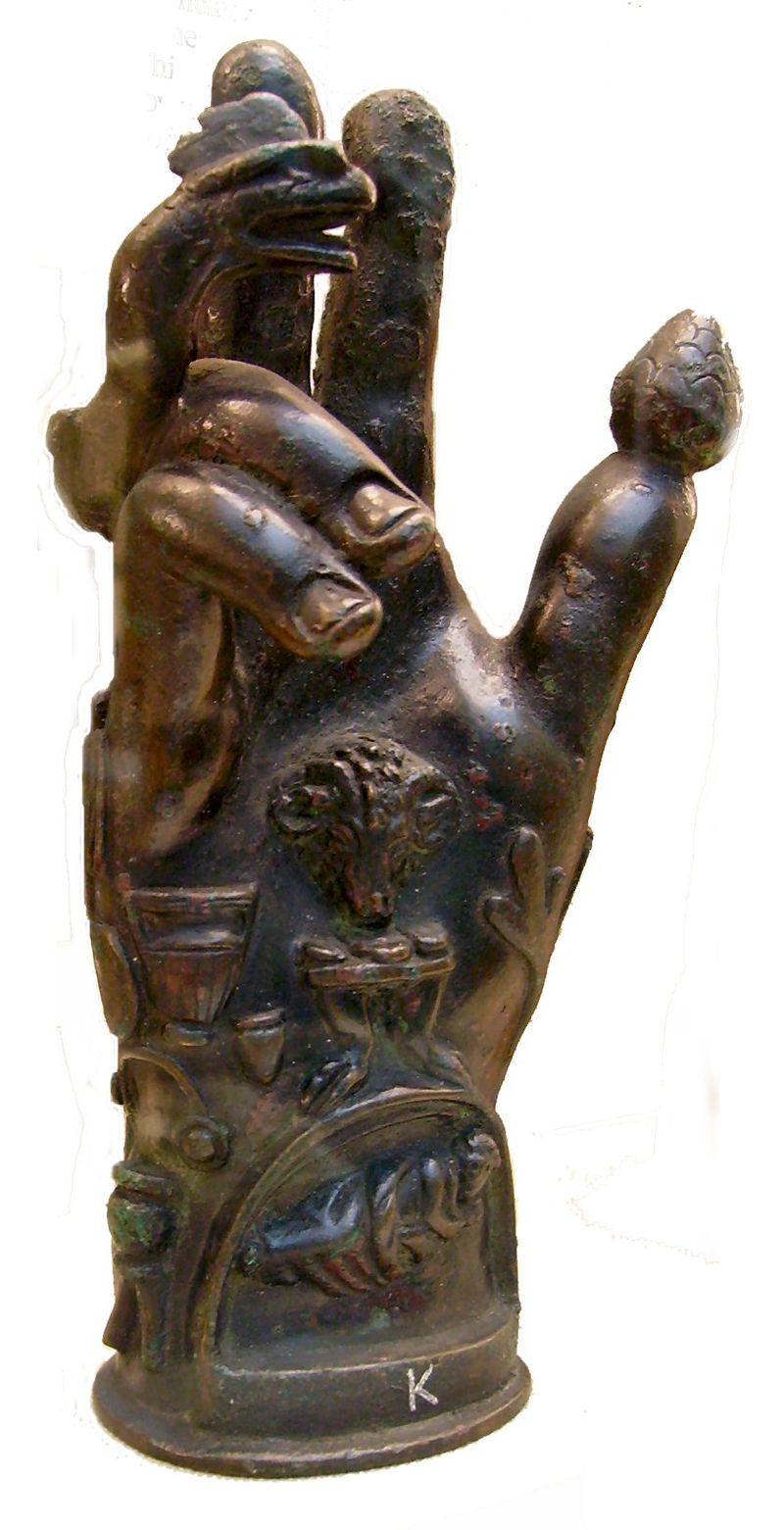Sabazius
Hailing from the ancient lands of Phrygia and Thrace, Sabazius reigned as a powerful deity, embodying both the celestial majesty of the sky father and the untamed spirit of the horseman.

Symbols: Staff, Gesturing hand, Horse
When Sabazius’ worship reached Roman soil, he was identified with familiar gods – Bacchus, the god of wine and revelry, and Jupiter, the king of the Roman pantheon. This association reflected Sabazius’ own complex nature.
Intriguingly, numerous archaeological discoveries shed light on his worship practices. One recurring motif is the bronze hand, often depicted in the “benedictio latina” gesture – a raised hand with two fingers extended, a symbol of blessing. These hands, believed to have held ritual significance, may have been attached to sceptres, like the one carried by Sabazius on a slab found in Philippopolis.
The hands themselves are a treasure trove of symbolism. A pinecone adorning the thumb is a common feature, while serpents winding around the wrist and fingers add an element of mystery. Variations abound, with some hands displaying a lightning bolt, a turtle, or even an eagle. These symbols likely held specific meanings to Sabazius’ devotees.

